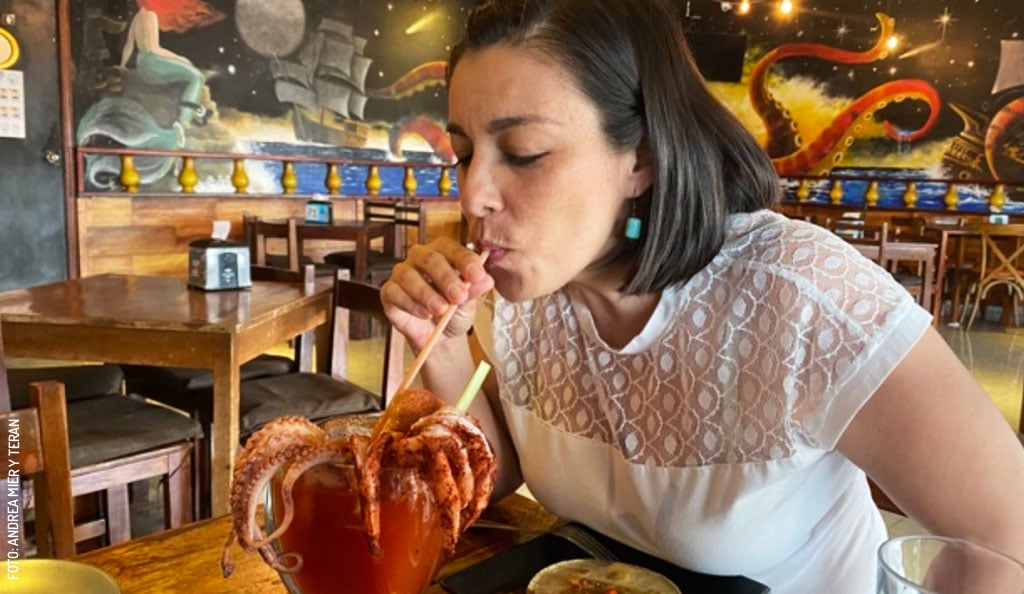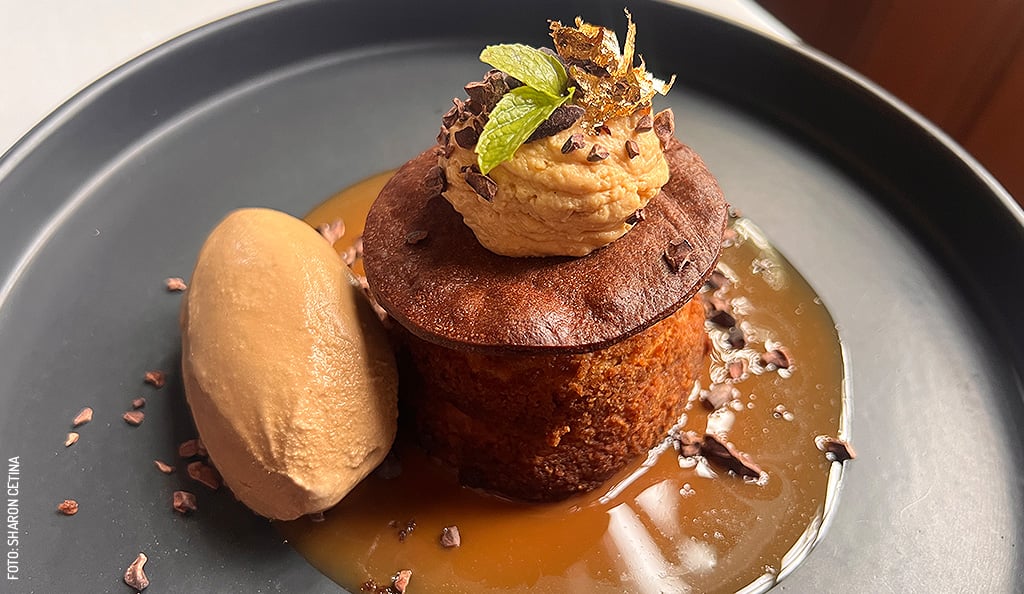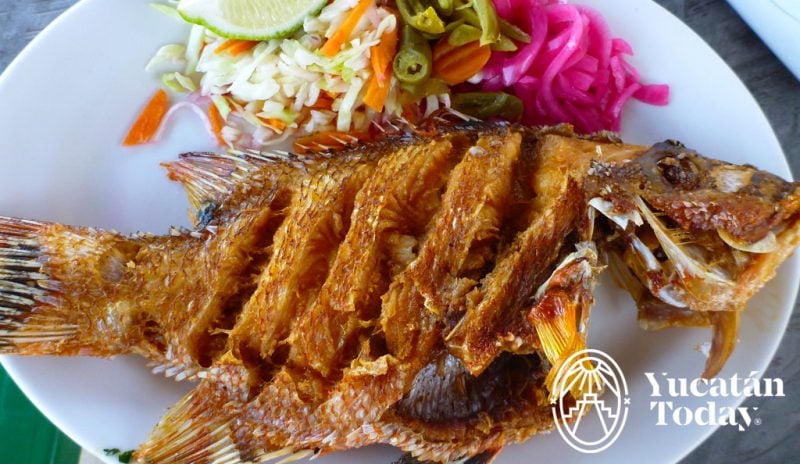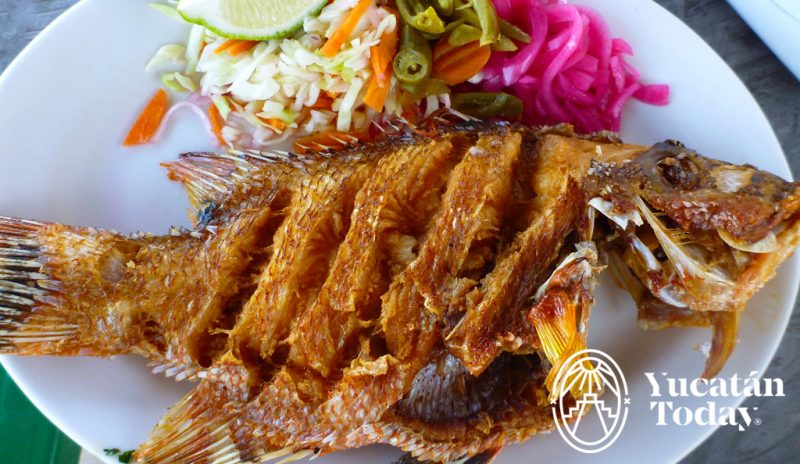It is customary, throughout the Yucatecan coast and some other parts of the Peninsula, to taste delicious fried fish. Of course, there are many ways to eat fish in Yucatan, including some more seasoned ones: garlic mojo, Tikin xic (charcoal), wallpapered, breaded, parboiled, baked, pickled, in posts, and many more!
But the dish I want to talk to you about today is fried fish. The one I found in my wanderings along the coast is a delicious fried boquinete, served with onion, tomato and some other typical dressings and tortillas, a good dose of habanero chili and a cold beer. The boquinete is one of the most sought-after species in Yucatan for its delicate white meat, as it lends itself to being prepared in many stews. It is only caught with a harpoon or in a net: it does not take the bait like many other species.
![Pescado-frito-2-800x464]() How do you eat fried fish?
How do you eat fried fish?
I suggest that, before trying a good order of fried fish in any restaurant, fishmonger or fried food place, ask to see the fish that they are going to cook for you. This should always be as fresh as possible, appearing pink and with firm, not grayish, eyes. Another point that I like to see and ask, especially in fishmongers, is when was the last time they changed the oil in the fryer; In many stores they use the same oil week after week! Anyway, these are just some tricks that I have learned with the intention of savoring one of the most iconic dishes of our coasts.
How do you eat fried fish?
Now, how to eat fried fish like a true Yucatecan. First of all, fried fish is eaten with your hands, not with a fork and knife. He extends a hand with a tortilla in his palm and proceeds to place the pieces of meat. Add red onion and tomato, squeeze a few drops of lemon, a few small slices of chili and enjoy it like never before. The fish must be clean; If there are some delicious pieces left, don't be afraid: remove the meat until it looks like a comb. Then you can say that you already know how to taste fried fish, whatever kind it is.
Enjoy!
REMEMBER During February and March the grouper is closed. Respecting this restriction is the only way to avoid the extinction of this important species; Help us preserve it!

Author: Alicia Navarrete Alonso
As a kid I heard that there's more to see than can ever be seen and more to do than can ever be done, so I set out to try. I'm passionate about knowledge and I love to share whatever my own is.
Receive the latest articles and much more from the best of Yucatán in your email!
Related articles

From the Editor’s Desk to the Editor’s Table
Explore Mérida's evolving food scene with Yucatán Today's editor. Discover honest, unpaid reviews from a true foodie, from new spots to local...
Always Room for Dessert: 4 Outstanding Restaurants in Mérida
Discover the best desserts in Mérida! From Rosas & Xocolate to Yerba Santa, explore the top restaurants and pastry shops for a perfect sweet finish.




 How do you eat fried fish?
How do you eat fried fish?
